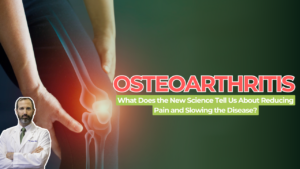For more videos subscribe to our YouTube channel here
SUMMARY
Did you know that the diagnosis of sciatica is often wrong? It’s true. And that’s why many people continue to suffer. Because if your diagnosis doesn’t identify the correct pain generator, then treatment is unlikely to help. “Sciatica” means irritation of the sciatic nerve. But there are many other structures that can be generating the pain. In this video, Dr. Shiller emphasizes the common misdiagnosis of sciatica and highlights the importance of an integrative approach for effective treatment. A hands-on examination by a qualified clinician is crucial to understanding the root cause. It’s also very important to consider and address biochemical imbalances and the mind-body connection when there is pain running down your leg. The best results come from an integrative pain management approach that considers structural, biochemical, and psychological factors for a comprehensive solution.
DID YOU KNOW?
- You can learn to reduce pain, improve mobility, and increase energy. Movement Toward Health is an affordable online training program that helps you heal and grow in a warm and inviting community. It opens periodically for new members. You can get more information and join the waitlist here: www.MTHTribe.com
- Do you want experienced, compassionate guidance in overcoming chronic pain or illness? Dr Shiller is available for telemedicine consultation worldwide regarding chronic pain, fibromyalgia, autoimmune disease, fatigue, and stress-related illness. Learn more here https://www.drshiller.com/consult
- Have you learned to mobilize your most important self-healing superpower? If you balance your stress/relaxation response, it could change your life. Dr Shiller gives regular free mind-body training sessions on zoom. Even if you “can’t meditate”, he has a way of helping. Learn practical tools for transforming pain and suffering, reducing stress and inflammation. Sessions are free. You can register at www.mindbodygroove.com
Related Posts
- Here’s How Autonomic Imbalance Drives Chronic Pain and Chronic Illness
- Dr Shiller’s Integrative Approach to Rehabilitation and Recovery after Trauma, Pain, Surgery, or Serious Illness
- Dr Shiller’s Integrative Approach to Pain
TRANSCRIPT
Hey, it’s Doctor Shiller.
I wanna speak briefly with you today about sciatica because so many people suffer with that symptom of pain from their butt or back going down their leg, and they’ve been told they have sciatica. For a lot of them, the diagnosis is just wrong, and they don’t get the right treatment. They don’t get better, and they continue to suffer because they got the wrong diagnosis. So let’s touch on what sciatica is and isn’t, and let’s talk about how an integrative approach frequently makes a difference and can take prolonged sciatica and get it better.
So for starters, I’m just letting you know where I’m coming from. I studied mechanical engineering at MIT and then I went to Duke University and Harvard Medical School for medical school and residency. So I really studied the best of conventional medicine as well as underlying biophysics and biology, and mechanics to really understand pain and the structure of your body.
And you know, sciatica refers to the sciatic nerve, and the sciatic nerve comes out of the lower lumbar nerve roots. There’s a diagram right here (I guess it’s probably there), so check out that diagram. It comes out of those roots and runs down and goes through your buttock and then runs down the back of your leg and splits into various other nerves all the way down to the bottom of your foot. So for sure, anywhere along that nerve, that nerve can get irritated. It can be the spinal roots; it can be in your butt where it goes through the piriformis muscle in some people. And from spasm in your butt muscle, you can actually get pain shooting down your leg. A lot of doctors don’t even know that. All they’re thinking about is, well, maybe you have a herniated lisk in your lower back. We should do some injections in your back, or maybe you need surgery. And they’re not thinking about the rest of the track of that nerve.
So it can be compressed in your buttock; it can also be irritated in the tissues themselves, depending on what kind of things have happened to the muscles and fascia and soft tissues of your lower leg. Because there are a lot of places you can have sciatica from things besides the sciatic nerve. If you have a bursitis in your greater trochanter on the outside of your hip or on your ischial bursa, which is kind of on the bottom of your pelvis, that can send pain down your leg. If you have chronic dysfunction of your fascia, whether it’s your psoas muscle in the core of your spine or higher up in your back, whether it’s in your buttock or the muscles of your lower back and the tissues, the fascia that invests them and connects them, bones to skin, head to toe, myofascial pain can start in your buttock or lower back and run down the back of your leg and seem like sciatica.
So the point is that there are different structures: your SI joint, your sacroiliac joint. When it gets dysfunctional, if it’s out of balance, there’s pain generators in there. And I’ve seen many cases where there was pain in the buttock going down the back, and we went and we sort of adjusted and balanced the SI joint in the pelvis, and like voila, the pain goes away.
So the first lesson to take home is that there’s a number of different structures in your lower back all the way down your leg that can generate that pain, and it can be the sciatic nerve or other things. And what’s really important is that you see a clinician who can do a really good hands-on exam and not just look at your X-ray or CT scan and say, oh, you got sciatica, there’s nothing to do for you because you don’t have a herniated disc that shows it or whatever the doctor says where they don’t have a solution. Don’t believe that! Find a qualified manual physical therapist or osteopath or physiatrist, a doctor who really knows how to do a good mechanical structural exam of the whole system and look in an integrative way at your muscle, bone, nerve, joint, structural system as one unit.
The other two pieces that are relevant for sciatica, which I have seen over and over again on my practice over the more than 20 years, is subtle biochemical imbalances, whether it’s nutrient deficiencies like vitamin B12 or vitamin D or magnesium, or whether it’s low-grade inflammation, biochemical stress, cellular stress, and toxicity. Those things can worsen the sensitivity of your pain system; they can increase the irritability of your muscles, predispose you to muscular or connective tissue spasm and restriction. Frequently, we fix those things, and that is synergistic with the issues that are going on through the connective tissue and the structural system of the body.
And then finally, your mind-body system is hugely important because that’s what processes pain; that’s what primes your body to its postural patterns. We talked a little bit about how the psoas, this big core muscle that runs down—well, here’s a picture of it—it inserts like at the bottom of your diaphragm where your ribs end and your lumbar spine starts and runs along your runner’s lumbar spine through your pelvis into your groin down your leg. This is one example when the psoas gets into spasm; you get pain shooting down into your groin, sometimes down your leg. It can seem like sciatica.
Not long ago, I saw someone who had really significant stressors and a significant trauma history prior that, and my experience just examining her was this twitchiness and irritability of her whole system. And when we started to talk about that history, she started to shake and cry, and she started to get pain in her leg. We brought it on by waking up that sort of difficult mind-body experience, and there’s ways to heal that, whether it’s through different kinds of psychotherapy, hands-on therapy, energy therapy. There are ways to heal and not just give drugs but to actually heal stressors, traumas, underlying grief, the things that can worsen pain or give rise to pain itself.
So that’s a little about sciatica. The key take-home points are that there are many different structural things besides the sciatic nerve, and you need to see someone who can actually put their hands on, understand the diagnosis, understand the CT scan and the MRI—what do those things really mean—but also do a hands-on exam and really feel and get a sense of what the structural driver or pain generator is. And then thinking about the biochemistry, the inflammation, and the mind-body system.
So that’s what I do; it’s integrative pain management. So I hope this has been interesting; I hope you share it. I hope you’re in touch, wishing you all the best.







